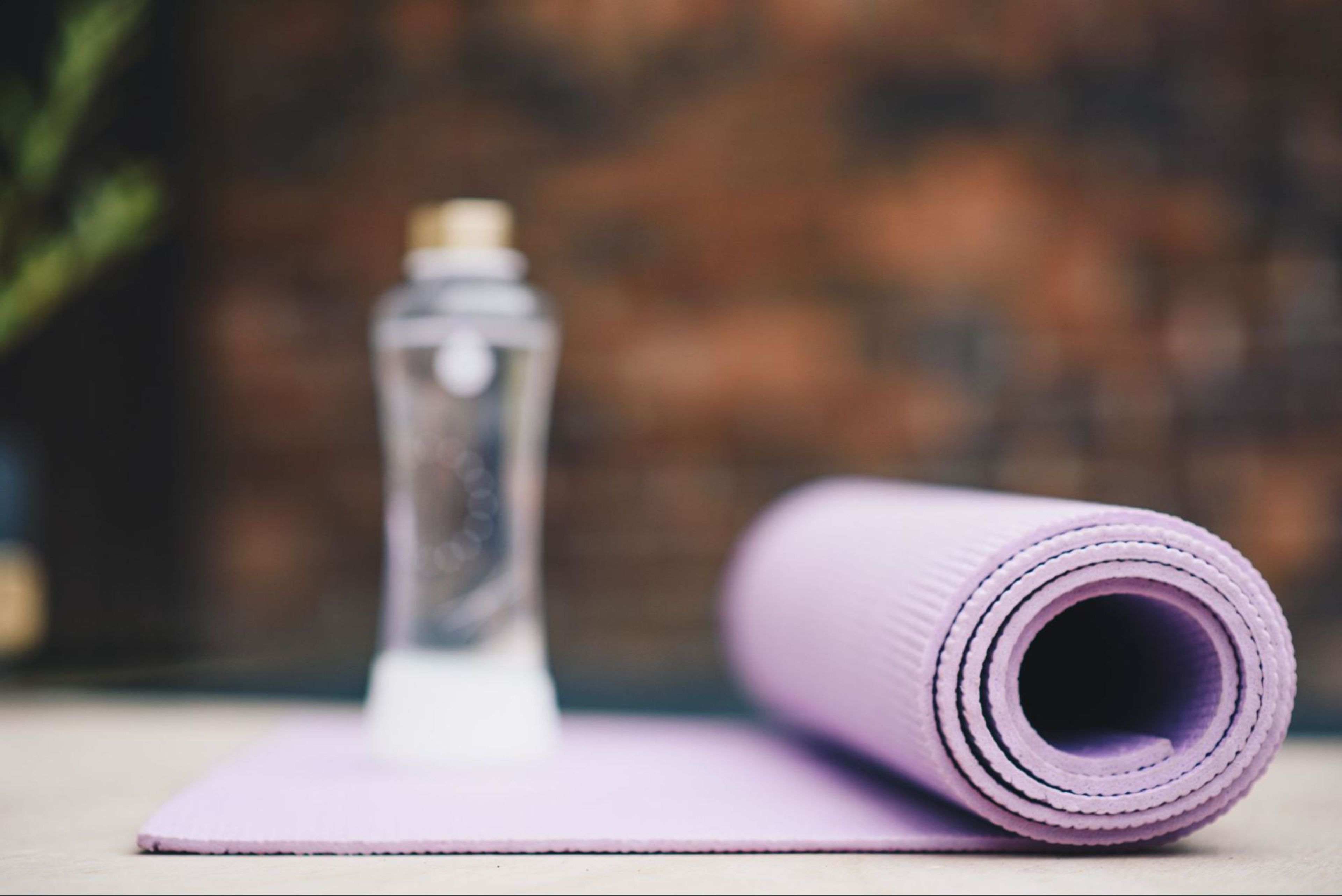How to Clean a Yoga Mat: A Step-by-Step Guide

My yoga mat has seen it all — the good days where poses feel effortless, the tough days when everything is a struggle, and those days where I roll out my mat just to lie down and take a moment for myself. I’ve sweat, laughed, cried, and sweat again onto my yoga mat.
If you are a regular (or aspiring) yogi, you may be wondering how to clean your yoga mat so that it can keep performing well every time you show up. In this article, we’ll talk about:
Let’s dive in!
Why it’s important to clean your yoga mat
Picture yourself lying down on your belly after a deep backbend like bow pose, catching your breath and resting the side of your face against your mat. Would you rather place the side of your face against a mat that had been cleaned recently, or one that had been soaked with sweat and trodden over by your bare feet for weeks or months on end without being cleaned?
The hygienic considerations may be obvious, but there are also some practical reasons for cleaning your yoga mat with some regularity. Yoga mats are made of various materials but all have the same intention to provide grip and support during your practice. Over time, the buildup of sweat, dirt, dust, and random debris that settles onto a mat can degrade the material, making it less grippy. Less grip means more slip, which is not just frustrating but can make some poses more dangerous.
How often should you clean your yoga mat?
There is certainly a balance to be struck with how often you clean your mat. Some mats can start to degrade if they are cleaned with too much regularity or with harsher cleaning products. Grippy mats can become less grippy over time with excessive cleaning, especially if they are made from a natural rubber material or cheaper foam. Some yogis who wish to preserve the grippiness of their mats will therefore elect to clean their mat less frequently.

Explore Hydrow’s library of yoga workouts from around the world.
In general, I recommend cleaning your mat every time after an intense session where there’s a lot of sweating involved. If your yoga practice is less intense and there’s not much sweat — say, a lovely restorative class – you can probably go a few sessions in between cleaning your mat. That being said, there’s nothing wrong with cleaning your mat every time you use it, especially if the mat travels with you a lot or lives in some communal storage situation.
How to clean your yoga mat: Step-by-step instructions
Here are the materials you will need to clean your mat:
Mat cleaning spray or mild soap and water
Clean cloth or sponge
Towel to dry the mat (optional)
Most yoga studios will offer some mat cleaning spray and towels to clean your mat after class. If you are practicing at home, you can purchase any number of specialty yoga mat sprays. The advantage of finding a cleaning spray that is specifically for yoga mats is that they typically contain natural ingredients and have a Zen sort of smell (think jasmine or tea tree). These sprays are typically gentle on your mat and conscientious for human health (again, imagine your face pressed against the mat and consider again which ingredients are in your cleaning solution).
Avoid harsh chemical cleaners for the health of your mat and yourself. If you don’t want to spring for a mat cleaner, any mild soap mixed with water can do the trick.
Using a sponge or a clean cloth, get good coverage of the yoga mat and gently wipe or scrub the solution around. Use the cloth or a towel to dry the mat as best as you can. I prefer allowing the mat to sit out for a minute or two to dry before rolling it back up. Even better, you can hang the mat to dry, if that’s an option. Just avoid rolling a damp mat back up if you can help it — you may find that it’s still damp when you next unroll it, and that’s no one’s favorite way to start practice.
When it’s time to get a new yoga mat
I will never forget the first time I knew it was time to say goodbye to my first yoga mat. My first mat was a cheap entry-level offering that I practiced on for years until it lost all grippiness and started shedding little foam pieces everywhere.
One day in class, the yoga teacher asked to use my mat to demonstrate a handstand hop against the wall. As soon as she kicked up, my entire mat slid backwards nearly a foot. She gracefully bailed out of her attempted handstand, turned to me and said, “Owen, you need a new mat.”
She was right. My mat had become so smoothed-out after continued practice that it was no longer grippy on either side. This is generally one sign that it’s time to consider a new yoga mat. Your ability to firmly grip the yoga mat will make your poses more stable and safer.
Another sign is shedding. Some mats, especially thinner foam-based mats, will begin to shed small pieces after a while. No one wants tiny multi-colored pieces of foam dirtying up a studio or indoor space. This is also a sign that the mat may be structurally compromised and less safe to practice on.
Summing it up
Properly cleaning your yoga mat is an essential part of maintaining the performance of the mat over the long term. Investing in safe and healthy cleaning products is important, as you will (hopefully) spend lots of time making direct contact with your yoga mat. Determining the cadence and conditions under which you clean your mat is highly individual based on your own goals and comfort. Like everything in yoga, cleaning your mat is another chance to practice being in the present moment.

Explore Hydrow’s library of 5,000+ rowing, circuit training, yoga, Pilates, and mobility workouts.






